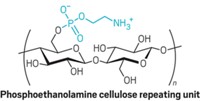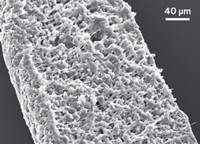Advertisement
Grab your lab coat. Let's get started
Welcome!
Welcome!
Create an account below to get 6 C&EN articles per month, receive newsletters and more - all free.
It seems this is your first time logging in online. Please enter the following information to continue.
As an ACS member you automatically get access to this site. All we need is few more details to create your reading experience.
Not you? Sign in with a different account.
Not you? Sign in with a different account.
ERROR 1
ERROR 1
ERROR 2
ERROR 2
ERROR 2
ERROR 2
ERROR 2
Password and Confirm password must match.
If you have an ACS member number, please enter it here so we can link this account to your membership. (optional)
ERROR 2
ACS values your privacy. By submitting your information, you are gaining access to C&EN and subscribing to our weekly newsletter. We use the information you provide to make your reading experience better, and we will never sell your data to third party members.
Analytical Chemistry
Origins Of Paper Discoloration
Yellowing tied to various carbonyl-based chromophores produced via oxidation of cellulose
by Mitch Jacoby
April 23, 2012
| A version of this story appeared in
Volume 90, Issue 17
Cellulose oxidation takes the blame for the unsightly yellowing of ancient paper, according to a study published in Physical Review Letters that identifies some of the key functional groups responsible for the discoloration (DOI: 10.1103/PhysRevLett.108.158301). By weight, ancient paper typically consists of more than 90% cellulose, which is made up of crystalline bundles of polysaccharide chains, each of which is built from hundreds to thousands of glucose molecules. To identify the chromophoric groups linked to paper discoloration, physicist Adriano M. Conte of the University of Rome, Tor Vergata, and colleagues compared samples of 15th-century French and Italian paper with modern reference samples that had been aged at elevated temperature and various levels of humidity. The group measured ultraviolet-visible reflectance spectra and analyzed the results through quantum mechanical calculations. They found that most of the yellowing was due to glucose oxidation that formed carbonyl units adjacent to aldehyde groups, ketone units, and conjugated diketone groups. The analysis method could serve as a nondestructive diagnostic tool to validate chemical methods to restore ancient art and paper, the group suggests.





Join the conversation
Contact the reporter
Submit a Letter to the Editor for publication
Engage with us on Twitter